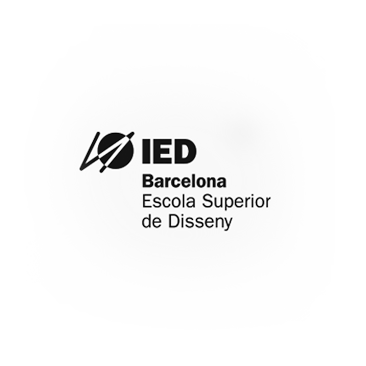Service Design with Port Barcelona: Checking the DISCOVERY phase!
Today our Business Design students have presented the conclusions of the first stage of their thesis
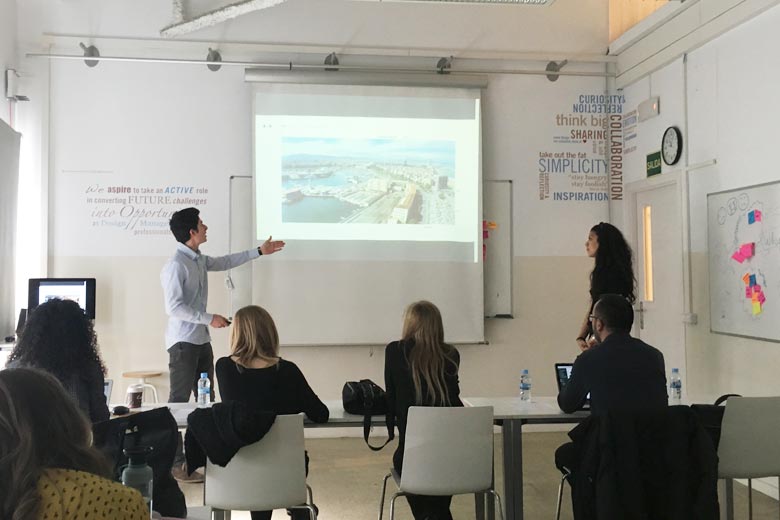
–Here you can read about the process they have followed during this DISCOVERY stage-
Before designing, we need to explore the context and observe, listen and understand our future users in order to identify a problem that needs to be addressed. This is just what our students have done during the first part of the process, the DISCOVERY stage. Today, they have shown the results to their tutors, Enric Bayó, Manuela Procopio and Idioa García and the team of Port de Barcelona.
Group 1: Erna Rán Jóhannsdóttir and Natalia Ruiz
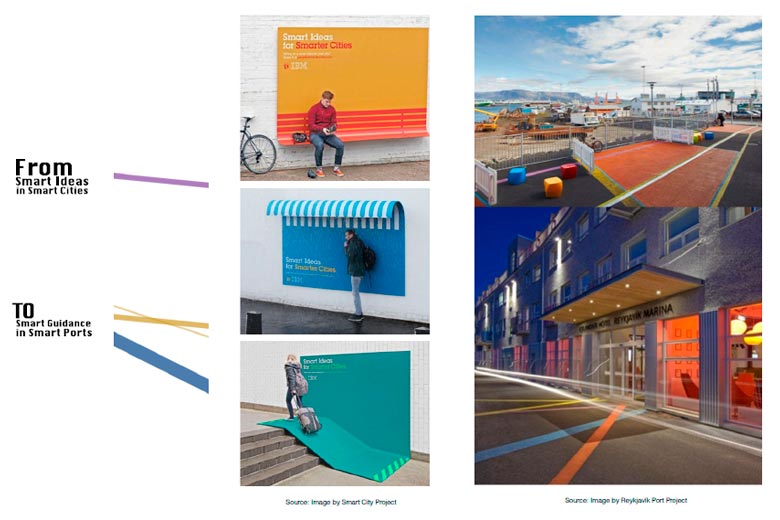
MAIN AREA. The port is divided into four different zones: Commercial (Containers), City Port (Cruises, ferries, leisure areas, Port Vell), Energy port, and Logistic port. The Port Vell area comprises two marinas, a fishing port and a maritime station for ferries. The main area they are focusing on is Nova Bocana, an area that has been almost forgotten but is currently under construction to become an area with added value.
TARGET. There are three main groups of users -each one with different needs- that would benefit from a better connection between the areas of the Port: locals -youngsters, families and elderly people-, workers -there are 10.655 workers in Barceloneta- and tourists.
SMART PORT. Port de Barcelona has been working towards becoming a sustainable port.
The three main focus of action are boat systems, payment systems and guidance systems. All related to the sustainable economic development and responsible resources management.
BOAT SYSTEMS. Renewable, solar and electric/hybrid are the most suitable clean fuels for marine applications. A chosen example of each one: Eco Catamaran, Serpentine Solar Shuttle, Greenline Hybrid.
PAYMENT SYSTEMS. It is important that the payment system is sustainable as well and that it is able to meet the
user’s needs in a fast and reliable way: Contactless payment, Smart Cards, E-payment,
GUIDANCE SYSTEMS. Applying a guidance system will control the traffic better and offer relevant information for each touchpoint around the area: Signage, navigation and way finding systems.
Group 2: Toby Fox and Maria Ilaria Robba
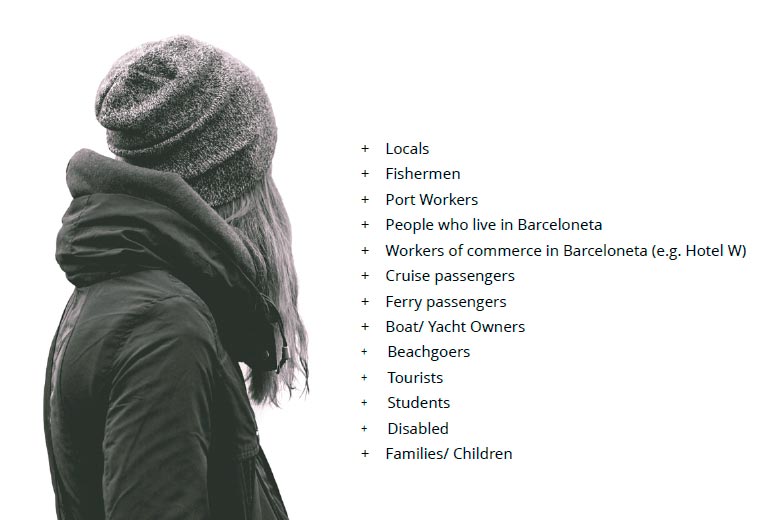
Toby and Maria Ilaria have focused their research on the barriers that usually dissuade the citizens from using public transport services.
RELIABILITY & FREQUENCY. (the most important barrier) – Services that are frequently delayed, prone to disruptions or are generally unreliable will be highly unpopular with the public. Customers display a strong understanding that wait times are unavoidable; however, they are frustrated by unexpected wait times. In fact, commuters are willing to wait more than four times longer if the wait is expected than if it is unexpected.
ACCESSIBILITY. This applies both to the ability to access the Nautic Bus to begin a trip and to have timely access to a destination.
INTERCHANGES. Customers will typically seek to avoid interchange during a journey because interchange can involve the risk of delay and uncertainty for customers.
OVERCROWDING. While linked to frequency and capacity, overcrowding on its own stood out as a distinct obstacle for customers. Customers are concerned about the effects that overcrowding has on their personal space and the impact that behaviour of other travellers has on the enjoyment of their journey. Many international metro systems experience average crowding of 6 persons per square metre during peak times.
Group 3: Ioana Crasovan and Juanita Villamizar
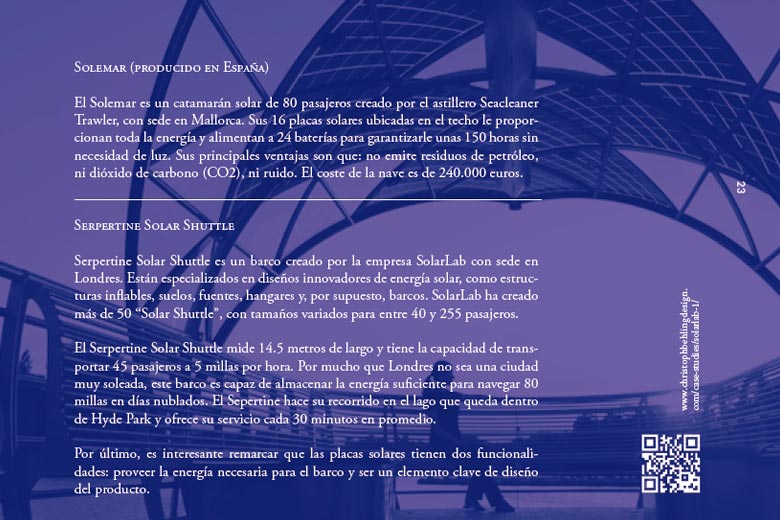
BENEFITS. A better circulation and the creation of different routes between the areas of the Port would relieve pedestrian congestion.
SUSTAINABILITY. One of the main key points of the project is to make it fully sustainable and implemented within the framework of the circular economy.
CONSTRUCTION MATERIALS. Eco-innovation and circular economy can be applied to the oceans. The construction of boats with organic materials such as biomass or flax fibre is being studied by entities such as IFREMER, and the reliability of biobased boats has been already proved.
ENERGY. LNG (Liquid Natural Gas) is an efficient and non-toxic fuel that can be even more sustainable if combined with solar energy. Examples of solar energy applied to marine navigation are Solemar or Serpentine Solar Shuttle. Eolic energy is also feasible as a complement, Eco Marine Power or LadeAS are examples.
DESIGN. Transportations with a modular structure are able to adapt to the requirements at any given time and makes access easy for users, optimizing times and expenses, it also allows to test users’ needs. Ex: Waterway 365. Transports can be designed to fulfil many roles. Planet Solar works exclusively with solar energy and collects environmental quality data. All users have to be present during the design process of the whole service (people with disabilities, babies, bikes…).
INFORMATION SYSTEM. An integrated navigation system devised to intuitively and physically accompany and guide the user step by step from origin to destination in order to eliminate downtime caused by lack of information. Whenever he goes, the user always has all the information he may need. Multisensory systems allow inclusive access to information for people with visual disabilities.
PAYMENT. Price differentiation makes possible to attend the needs of each type of user (kids, students, pensioners, regular users…).
DATA & TESTING. Collect data and understand the routine of each type of user enables to manage demand peaks, test the service and improve it.
COMMUNICATION. Make the user perceive it as a love brand through the whole experience.
After this presentation, the students will start with the next stage, the DEFINITION. Good luck (and hard work) to all of them!
